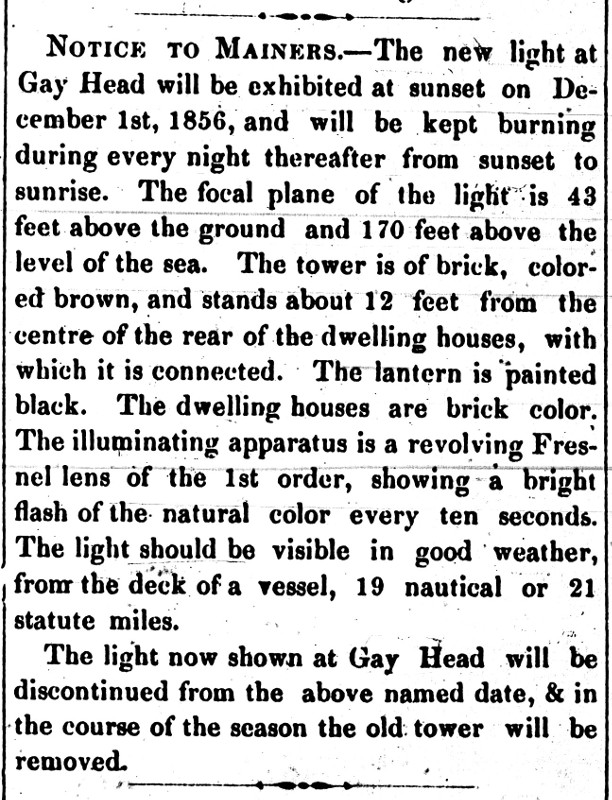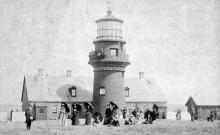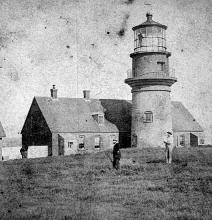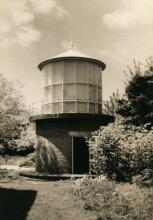Notice to Mariners. - The new light at Gay Head will be exhibited at sunset on December 1st, 1856, and will be kept burning during every night thereafter from sunset to sunrise. The focal plane of the light is 43 feet above the ground and 170 feet above the level of the sea. The tower is of brick, colored brown, and stands about 12 feet from the centre of the rear of the dwelling houses, with which it is connected. The lantern is painted black. The dwelling houses are brick color. The illuminating apparatus is a revolving Fresnel lens of the 1st order, showing a bright flash of the natural color every ten seconds. The light should be visible in good weather, from the deck of a vessel, 19 nautical or 21 statute miles.
The light now shown at Gay lead will be discontinued from the above named date, & in the course of the season the old tower will be removed.

From the November 28, 1856 edition of the Vineyard Gazette:
In conformity with the notice dated July 22d, 1856, the new light at Gay Head will be exhibited at sunset on December 1, 1856, and will be kept burning every night thereafter from sunset to sunrise.

“OBSERVER,” writes quite an interesting letter to the Namasket (Middleboro’) Gazette, respecting Gay Head and the Indians who inhabit that locality. He says:—
“Leaving here (West Tisbury,) we proceeded to the place of our destination—Gay Head —distant about 11 miles. Here a good Christian family, by name, How-was-wee received us and provided the bodily needful for several days. The natives here number about 200 and live very comfortably—their condition is
better than those at Marshpee. They appear temperate, moral and Industrious. Unlike the brethren at Mashpee, they prefer their land to remain undivided, each one cultivating as much as he chooses, the revenue of the remainder going for general purposes. They have a little church of about 50 members, preaching being for the most part provided by a fund at Harvard College. There is also a school of between 40 and 50 scholars, that would compare favorable with the schools in this town. We never before had the pleasure of looking into 80 or 90 black eyes at once, each beaming with true native intelligence.
This part of the island seems for the most part to be a bed of valuable white and red clay. It is worth $3.50 per ton on the spot and is carried off in cart loads to Providence, Taunton and other places. Sometimes in calm weather large ships anchor near the cliffs and load: at such times they all turn out, the women as well al the men; the men cut out the clay in lumps, while the women stand in rows down to the vessel and pass it along in their hands after the manner of passing pails of water sometimes at fires; they afterwards divide the money, one man having as much as two women. As another source of profit to them I will mention their cranberries, of which some years they pick nearly 300 bush 300 bushels.
Here is situated one of the most important lights on the coast. The old one now in operation is a revolver and consists of 14 lamps, with reflections. A new one on an improved plan has just been put up to go into operation the first of December. It cost $18,000; instead of revolving as the old one, the lamp which is single, consists of four circular wicks inside each other, enclosed by a glass dome six or-seven feet high nand about four wide, which revolves once in four minutes. This dome is formed of about 600 plain convex lens, and twenty-four local glasses opposite the lamp. It is a fine piece of work. The light is supposed to penetrate farther than other
kinds.”












Comments